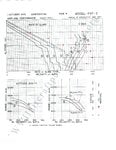P-39 Expert
Non-Expert
The slightly aft CG after ammunition was expended did not affect approach or landing. Or any normal maneuvers for that matter, just post-stall. P-39 was as safe as any other AAF fighter.I'm beginning to wonder if you do.
I'm pointing out that .30 caliber proof armor is minimum armor, no aircraft I'm aware of carried a smaller caliber weapon, while almost any axis aircraft you would meet ( with the exception of the Ki-43 early in the war) had additional guns that were bigger than .30 cal.
So just what good did the armor do?
What Larry Bell did IMO was create a aircraft that was so different from other aircraft it was dangerous.
Right at the end of a combat mission when the ammo is low or out, and the pilots flying skills aren't the best because he's probably dog tired.
Most aircraft handle the best at the end of the flight, if there's no battle damage, lower total weight, lower stalling speed, etc.
But in the P-39's case that's when it's most sensitive, with close to aft CG.
Pull that turn to final a little too tight, or rough, and you'll end up in a stall/spin that'll take more altitude to recover from than you've got.
Most aircraft destroyed in combat in the WW2 era would get no investigation under most conditions.
The pilot, if he survived, sometimes might have a clue. His squadron friends might see it, but are likely too busy with the mission, or their own survival , to really concentrate on exactly what happened.
And even if they could find a secure crash site, no one had the time to do a complete forensic investigation on a smoking hole in the ground, like modern crash investigations .
I feel like this is a waste of time trying to have a adult conversation with someone who evidently has no knowledge beyond what he reads, and has no real experience with anything mechanical.

